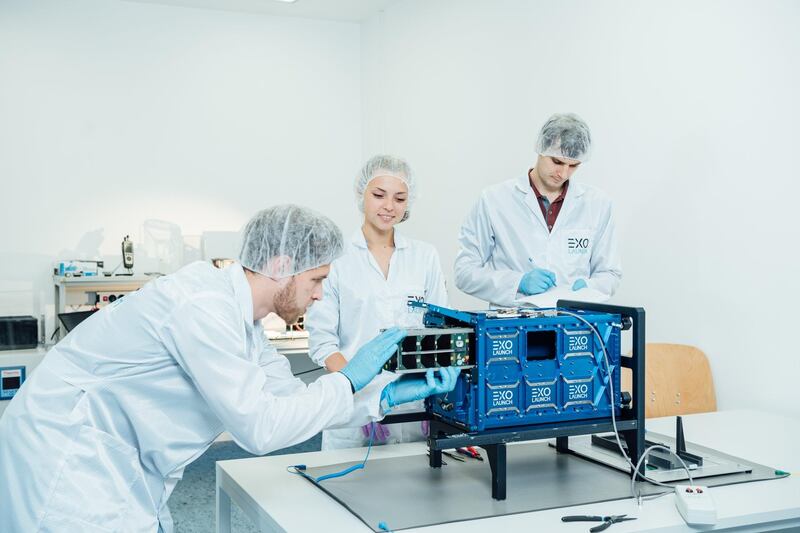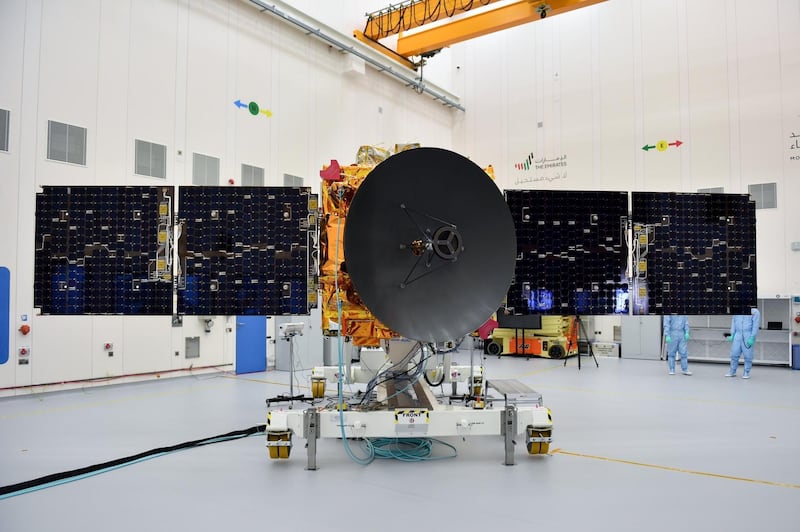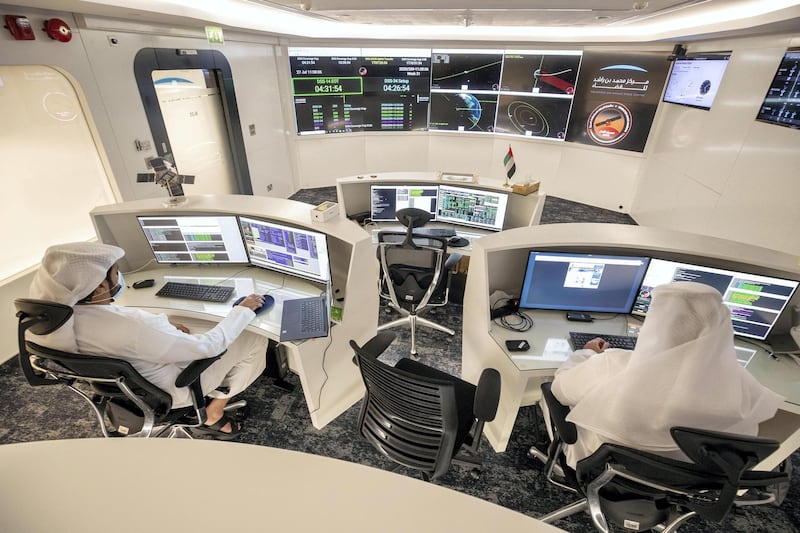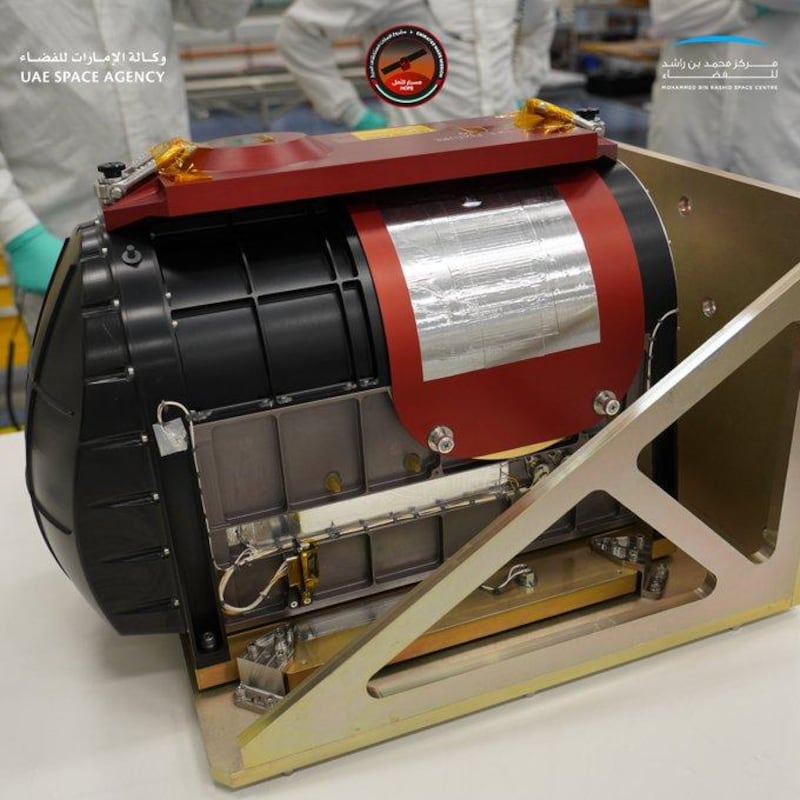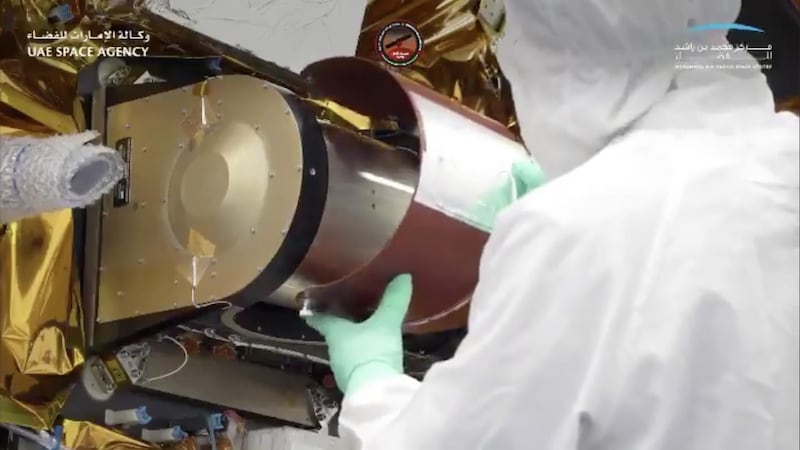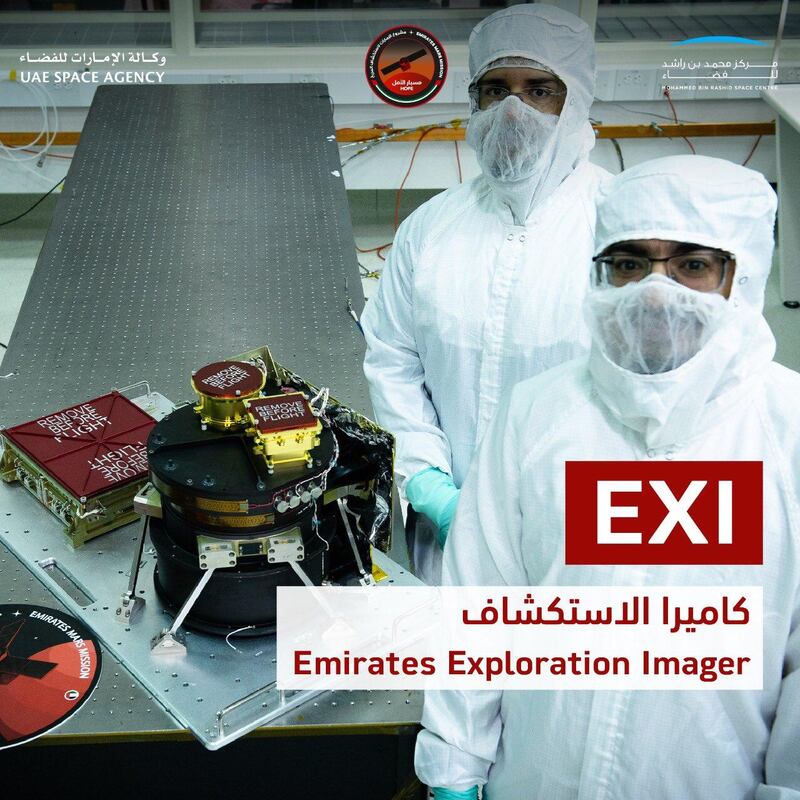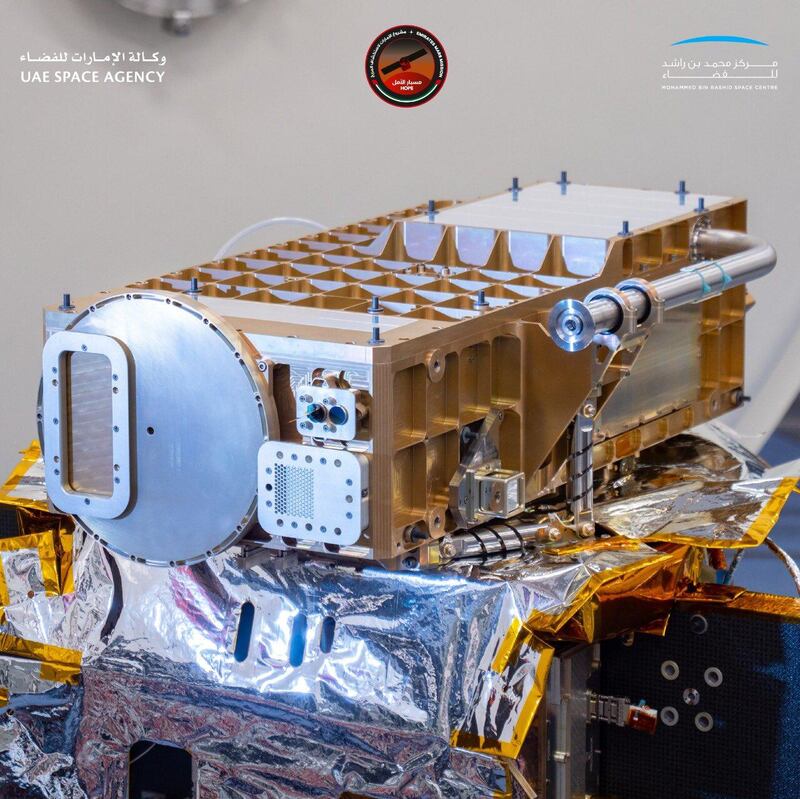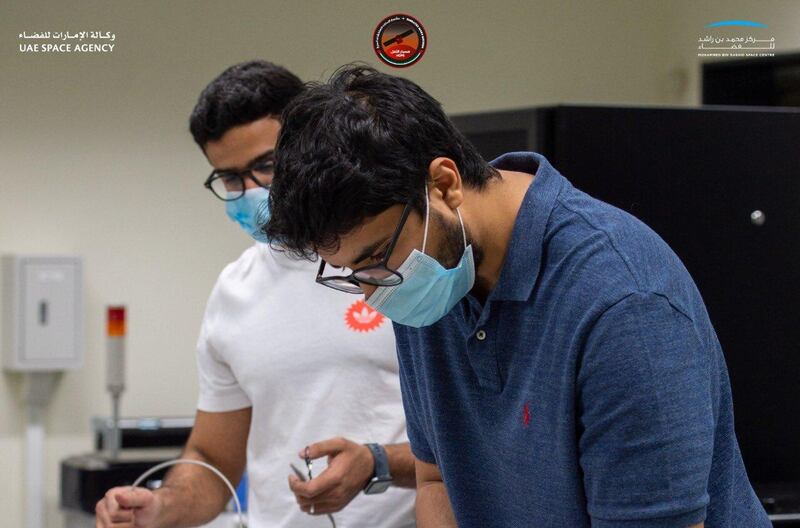A miniature satellite developed by university students in the UAE to observe the country's climate will launch later this month.
MeznSat was funded by the UAE Space Agency and built by engineering and science students at the Khalifa University and American University of Ras Al Khaimah (Aurak).
MeznSat’s initial lift-off was scheduled for the end of 2019, however it was delayed twice and will now blast into the skies on a Soyuz-2b rocket from Russia on September 28.
It is the third miniature satellite - known as a CubeSat - constructed in the Emirates.
The National explains more about the nanosat and what it will study.
What is a CubeSat?
A CubeSat, or nanosat, is a miniature satellite that weighs between one to 10 kilograms.
They are cost-effective and are mostly used for school or university research projects. Their subsystems can often be bought by suppliers and assembled by students.
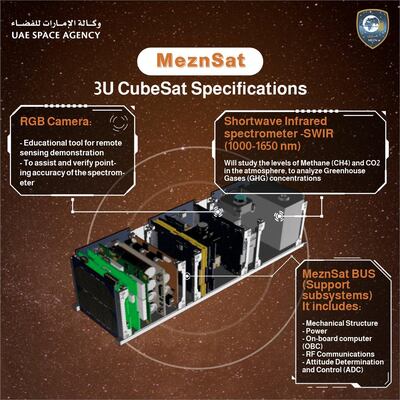
Cubesats help students develop multiple skill-sets, including creating software, programming, coding, assembling, engineering and other technical skills.
The UAE has launched nanosats before, the student-built Nayif-1 in 2017 and MySat-1 in 2018. Students from Khalifa University are also working on MySat-2 and Light-1 CubeSats.
Who built MeznSat?
MeznSat is a 3-unit CubeSat that was designed and developed by students at Khalifa University and Aurak.
Maryam Saeed Al Nuaimi graduated from Aurak as an electronic and communications major last year and worked on the nanosat’s programming.
"It was a chance for us to participate in a project that offered practical training," she told The National.
“I wasn’t in space-related studies, but it built my interest in the field and even helped me secure an internship at BAE Systems in the UK, where I was exposed to more space projects.”
Studying UAE’s climate
MeznSat will use its payload, the Argus 2000 spectrometre, to collect data on greenhouse gas emissions over the UAE, specifically carbon dioxide and methane concentrations.
It will also study the red tide phenomenon in the UAE, which is when a species of algae called dinoflagellates grows out of control. Out of the thousands of species, a few dozen of them can be extremely toxic to people and marine life.
Abdulla Almesmari, a PhD student in mechanical engineering at Khalifa University, assisted with the testing and integration of MeznSat.
"The scientific purpose of the nanosat is important," he told The National.
“Red algae can really affect our water resources. The on board RGB (red, green and blue) camera will help detect when and where the algae is growing and the spectrometre will measure the greenhouse gases.”
MeznSat’s technical specifications
The nanosat has an RGB camera that will be used as an educational tool for remote sensing demonstrations. It will also assist and verify the pointing accuracy of the spectrometre.
To study the levels of methane and carbon dioxide in the atmosphere and analyse greenhouse concentrations, the nanosat is equipped with a shortwave infrared spectrometre.
Its support subsystems include an on- board computer, attitude determination and control feature, a mechanical structure and radio frequency communication.
Communicating with MeznSat
The nanosat will send back data to the YahSat lab in Khalifa University.
It will also communicate with the new ground station at Aurak.
The station will be able to communicate with satellites in orbit by sending commands and receiving telemetry, images and science data back from them.
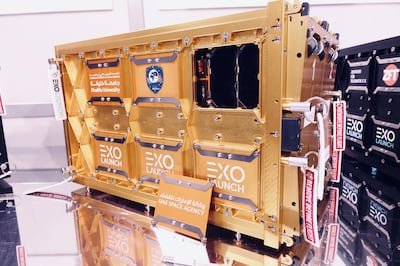
"With the addition of the satellite ground station, the space lab at Aurak is now fully equipped with all major resources required to build and operate nanosatellites which also includes an ISO 7 clean room and other satellite ground support equipment," Dr Abdul-Halim Jallad, director and assistant professor at Aurak said during the launch of the ground station.
Who will launch it?
The UAE has hired the services of Exolaunch, a German commercial firm that offers launches and deployment solutions for nano and small satellites, to send MeznSat into space.
MeznSat will take off in a Russian Soyuz-2 rocket from Russia, along with 14 other nanosats on board.
The time of the launch has not been confirmed yet.
